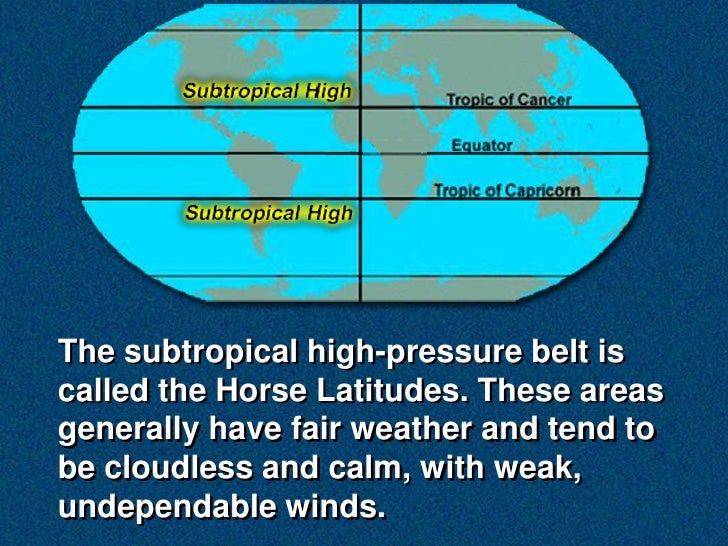Pressure Belts of the World
a) Equatorial Low Pressure Belt:
At the Equator heated air rises leaving a
low-pressure area at the surface. This low pressure area is known as
equatorial low pressure. This area extends between 50°N and 50°S
latitudes. The zone shifts along with the northward or southward
movement of sun during summer solstice and winter solstice respectively.
The pressure belt is thermally induced because the ground surface gets
heated during the day. Thus warm air expands, rises up and creates low
pressure.
b) Sub-tropical High Pressure Belt:
The warm air risen up at the equator due
to heating reaches the troposphere and bend towards the pole. Due to
coriolis force the air descends at 30-35º latitude thus creates the belt
of sub-tropical high pressure. The pressure belt is dynamically induced
as it owes its origin to the rotation of the earth and sinking and
settling of winds. This zone is characterized by anticyclonic conditions
which cause atmospheric stability and aridity. Thus the hot deserts of
the world are present in this region extending between 25-35 degrees in
both the hemisphere.
c) Sub-Polar Low Pressure Belt:
This belt is located between 60-65 degrees
latitudes in both the hemisphere. This pressure belt is also
dynamically induced. The surface air spreads outward from this zone
due to rotation of the earth thus produces low pressure. The belt is
more developed and regular in the southern hemisphere than the northern
due to over dominance of water in the former.
d) Polar High Pressure Belt:
High pressure persists at the pole due to
low temperature. Thus the Polar High Pressure Belt is thermally induced
as well as dynamically induced as the rotation of earth also plays a
minor role.
Coriolis force
The rotation of the Earth creates force,
termed Coriolis force, which acts upon wind. Instead of wind blowing
directly from high to low pressure, the rotation of the Earth causes
wind to be deflected off course. In the Northern Hemisphere, wind is
deflected to the right of its path, while in the Southern Hemisphere it
is deflected to the left. Coriolis force is absent at the equator, and
its strength increases as one approaches either pole. Furthermore, an
increase in wind speed also results in a stronger Coriolis force, and
thus in greater deflection of the wind.




Post a Comment
Post a Comment